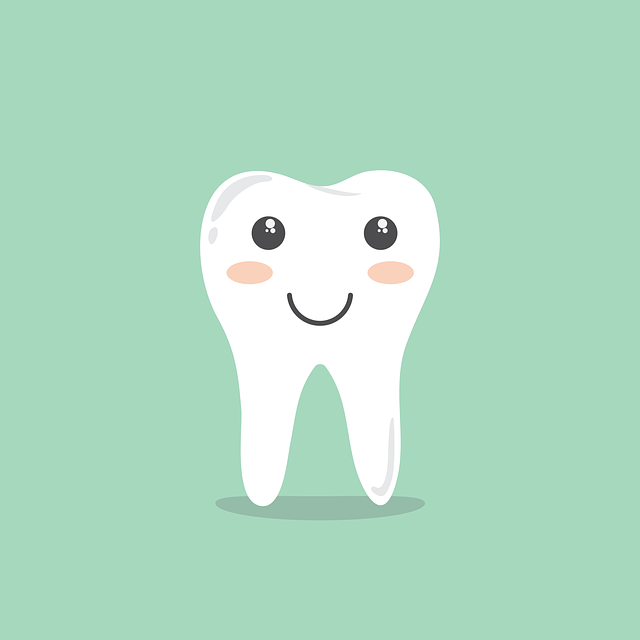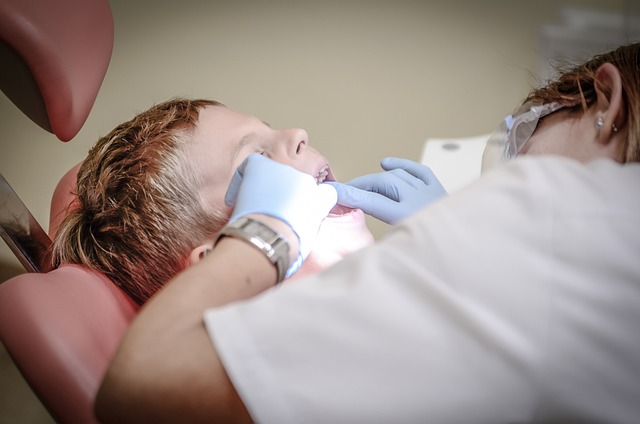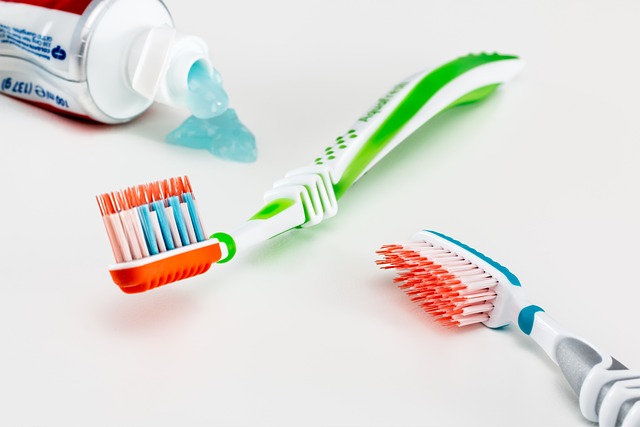Post-Orthodontic Care: How to Take Care of Retainers After Braces
Congratulations! You’ve made it through the journey of braces and achieved a beautifully aligned smile. But hold on, the work doesn’t end there. Just like a masterpiece needs proper care and maintenance, your teeth require post-orthodontic care to ensure that your stunning smile lasts a lifetime. In this article, we will delve into the world of retainers – those trusty allies that help maintain the results of your braces. From cleaning techniques to essential do’s and don’ts, we’ll equip you with the knowledge you need to take care of your retainers with confidence. So, let’s dive in and discover the secrets to keeping your smile on point!
1. The Importance of Post-Orthodontic Care: Retainers After Braces
After months or even years of wearing braces, the day finally arrives when they are removed, revealing a beautifully aligned smile. However, this is not the end of the orthodontic journey. It is vital to understand the importance of post-orthodontic care, specifically the use of retainers. Retainers play a crucial role in maintaining the results achieved through braces and ensuring a long-lasting, straight smile.
Retainers preserve the alignment: Once braces are removed, the teeth have a natural tendency to shift back to their original positions. This is due to the constant pressure exerted on the teeth by the lips, tongue, and cheeks. Retainers prevent this shifting by holding the teeth in their new positions, allowing the surrounding tissues to adapt and stabilize. Consistently wearing retainers as instructed by your orthodontist will help maintain the alignment achieved by braces.
Retainers support bone and gum health: Apart from preserving the alignment, retainers also aid in maintaining the health of the surrounding bone and gums. When teeth are properly aligned, the force of biting and chewing is distributed evenly across the jaw, reducing the risk of excessive wear and tear. Additionally, retainers can help prevent gum recession and periodontal issues by keeping the teeth in their correct positions, preventing pressure on the gums and bone. By diligently wearing your retainers, you can ensure the long-term health and stability of your smile.

2. Retainers 101: A Comprehensive Guide to Maintaining Your New Smile
Retainers are an essential part of maintaining your new smile after orthodontic treatment. Once your braces are removed, wearing retainers helps to ensure that your teeth stay in their new positions and don’t shift back to their original alignment. Here is a comprehensive guide to understanding and properly maintaining your retainers:
1. Types of Retainers:
- Removable retainers: These retainers are made of a clear plastic material and can be easily taken out and put back in. They are typically worn full-time initially and then gradually reduced to only at night.
- Fixed retainers: These retainers are thin wires that are bonded to the back of your teeth. They are a more permanent option and require less maintenance compared to removable retainers.
2. Proper Care and Cleaning:
- Regular cleaning: Clean your retainers daily using a soft-bristle toothbrush and mild soap or non-alcoholic mouthwash. Avoid using hot water as it can distort the shape of the retainers.
- Storage: When not in use, store your retainers in their protective case to prevent damage or loss. Keep them away from pets and young children.
- Regular check-ups: Visit your orthodontist regularly for check-ups to ensure that your retainers are still fitting properly and effectively maintaining your new smile.

3. Practical Tips for Daily Retainer Care: Keeping Your Teeth Straight and Healthy
Proper care and maintenance of your dental retainers is crucial in ensuring the longevity of your orthodontic treatment results. Here are some practical tips to help you keep your teeth straight and healthy while wearing retainers:
- Remove and clean your retainers daily: Take out your retainers and rinse them with lukewarm water every morning. Use a soft toothbrush and mild soap or non-alcoholic mouthwash to gently clean them. Avoid using hot water or toothpaste, as they can damage the retainers.
- Brush your teeth before wearing retainers: It’s essential to maintain good oral hygiene. Brush and floss your teeth thoroughly before putting your retainers back on. This helps prevent any food particles or plaque from getting trapped between your teeth and the retainers.
- Avoid exposing retainers to heat: High temperatures can distort the shape of your retainers, rendering them ineffective. Keep them away from hot water, direct sunlight, microwaves, or boiling water. Instead, store them in their protective case when not in use.
- Keep retainers away from pets or children: Pets may be attracted to the smell or texture of retainers, leading to damage. Additionally, children might see them as toys. Always keep your retainers out of reach to prevent accidents or breakage.
By following these practical tips, you can maintain the health and effectiveness of your retainers, ensuring that your teeth stay straight and your smile remains beautiful. Regularly scheduled check-ups with your orthodontist will also help monitor your progress and address any concerns that may arise along the way. Remember, proper care today means a lifetime of benefits from your orthodontic treatment!

4. Understanding Retainer Types: Choosing the Right One for Your Orthodontic Needs
When it comes to retaining your beautiful smile after orthodontic treatment, choosing the right retainer is crucial. Retainers play a vital role in maintaining the alignment of your teeth and preventing them from shifting back to their original position. However, with various types of retainers available, it can be overwhelming to decide which one is best suited to your unique needs. To help you make an informed choice, we have outlined the different retainer options below:
- Hawley Retainers: These traditional retainers consist of a plastic base and a metal wire that wraps around the front teeth. They are easily adjustable, allowing for minor corrections if necessary. Hawley retainers are durable and can last for several years with proper care.
- Clear Retainers: Made from a transparent plastic material, clear retainers are discreet and nearly invisible when worn. They are custom-made to fit snugly over your teeth, ensuring optimal comfort. Clear retainers are typically more fragile than other types, so proper handling and regular replacements are essential.
- Fixed Retainers: Unlike removable retainers, fixed retainers are bonded to the back of your teeth using a dental adhesive. This type of retainer is ideal for individuals who may forget to wear their retainer consistently. Although fixed retainers are highly effective, they require extra attention during oral hygiene routines to prevent plaque buildup.
Remember, each retainer type has its advantages and considerations. To determine the best retainer for you, consult with your orthodontist. They will evaluate your specific orthodontic needs, lifestyle, and personal preferences to recommend the most suitable retainer type that will help you maintain your beautiful smile for years to come.
5. Dos and Don’ts of Retainer Maintenance: Expert Advice for Long-Term Success
Retainer Maintenance: Expert Tips for Long-Term Success
When it comes to maintaining your retainer, there are several dos and don’ts that can ensure its long-term effectiveness. Following these expert tips will help you keep your retainer clean, comfortable, and in good condition:
- Do clean your retainer regularly: To prevent the buildup of bacteria and plaque, it’s crucial to clean your retainer daily. Use a soft toothbrush and mild soap or retainer cleaner to gently scrub away any residue. Rinse thoroughly with warm water before placing it back in your mouth.
- Don’t use harsh chemicals: Avoid using harsh chemicals like bleach or alcohol-based mouthwash to clean your retainer, as they can damage the plastic or metal components. Stick to gentle cleaning solutions specifically designed for retainers.
- Do handle your retainer with care: Always remove your retainer gently, using both hands, to avoid bending or damaging it. When not in use, store it in a protective case to protect it from potential accidents or damage.
- Don’t forget to brush your teeth: Maintaining proper oral hygiene is essential even when wearing a retainer. Brush your teeth thoroughly before putting your retainer back in your mouth to prevent any food particles or plaque from getting trapped.
- Do keep your retainer away from heat: Exposing your retainer to heat can cause it to warp or lose its shape. Avoid leaving it in direct sunlight, hot water, or near any heat sources such as stoves or heaters.
- Don’t neglect regular check-ups: Schedule regular appointments with your orthodontist to ensure your retainer is fitting correctly and to address any concerns or adjustments that may be needed for optimal effectiveness.
By following these dos and don’ts, you can maintain your retainer effectively, ensuring long-term success in retaining the results of your orthodontic treatment.

6. Overcoming Common Challenges: Troubleshooting Retainer Issues and Solutions
Retainer Issues and Solutions
Retainers are an essential component of many dental treatments, ensuring that the teeth stay aligned and maintain their proper position after orthodontic treatment. However, like any dental appliance, retainers can sometimes present challenges. Here are some common issues that patients may encounter with their retainers, along with practical solutions to overcome them:
- Poor fit: If your retainer feels loose or uncomfortable, it may not be providing the necessary support for your teeth. In this case, it is crucial to consult your orthodontist to have the retainer adjusted or replaced with a properly fitting one. Avoid attempting to adjust the retainer yourself, as this could lead to further complications.
- Breakage: Accidents happen, and retainers can break or crack. If you notice any damage to your retainer, contact your orthodontist immediately for guidance. In the meantime, take care not to wear the damaged retainer to prevent potential injury or further damage to your teeth. Your orthodontist will be able to evaluate the situation and provide a suitable solution, which may involve repairing or replacing the retainer.
- Misplacement: It’s not uncommon for retainers to be misplaced or accidentally thrown away. If you find yourself without your retainer, get in touch with your orthodontist as soon as possible. They will advise you on the best course of action, which may involve temporarily using your previous retainer until a replacement can be made.
By addressing these common challenges with retainers, you can ensure the longevity and effectiveness of your orthodontic treatment. Remember, regular communication with your orthodontist is key to resolving any retainer issues you may encounter.
7. The Lifespan of Retainers: When to Replace and How to Extend Their Durability
Retainers are an essential part of maintaining the alignment and stability of your teeth after orthodontic treatment. Understanding the lifespan of retainers and knowing when to replace them is crucial to ensuring the effectiveness of your treatment. On average, retainers can last anywhere from 1 to 5 years, depending on several factors such as the type of retainer, how well it is cared for, and individual wear and tear.
To determine if your retainer needs replacement, there are a few signs to look out for. First, check for any visible damage or wear, such as cracks, chips, or loose wires. These can compromise the retainer’s ability to hold your teeth in place effectively. Additionally, if your retainer feels uncomfortable or doesn’t fit properly, it may be time for a replacement. Regular visits to your orthodontist can help assess the condition of your retainer and determine if it needs to be replaced.
Fortunately, there are steps you can take to extend the durability of your retainers. Proper care and maintenance are key. Here are some tips to help:
- Always remove your retainers before eating or drinking anything other than water.
- Brush your retainers daily using a soft toothbrush and mild soap or denture cleaner.
- Store your retainers in their case when not in use to protect them from damage or loss.
- Avoid exposing your retainers to heat, as it can cause them to warp or lose their shape.
By following these guidelines and regularly replacing your retainers when necessary, you can ensure that your orthodontic treatment continues to deliver long-lasting results.
Frequently Asked Questions
Q: Why is post-orthodontic care important after getting braces?
A: Post-orthodontic care plays a crucial role in maintaining the results achieved through braces. It helps to ensure that your teeth stay in their proper positions and prevent any relapse.
Q: How long will I need to wear retainers after getting braces?
A: The duration of retainer wear varies from person to person. However, it is generally recommended to wear retainers full-time for the first few months after braces removal, followed by nighttime wear for an extended period, typically for a year or more.
Q: What should I expect during the initial adjustment period with retainers?
A: Initially, wearing retainers may feel slightly uncomfortable as your mouth adapts to the new appliance. It is common to experience increased salivation or a mild lisp. However, these sensations should subside within a few days as you get accustomed to wearing them.
Q: How do I clean my retainers?
A: It is essential to keep your retainers clean to maintain good oral hygiene. Brushing your retainers with a soft toothbrush and mild soap or non-abrasive toothpaste is recommended. Alternatively, you can use denture cleaners or retainer cleaning tablets. Avoid using hot water, as it can warp the retainer.
Q: Can I use mouthwash to clean my retainers?
A: While using mouthwash may seem like a convenient option, it is not recommended. Some mouthwashes contain alcohol or other chemicals that can damage the retainer’s material. Stick to using mild soap, non-abrasive toothpaste, or specific retainer cleaning products.
Q: How often should I clean my retainers?
A: Cleaning your retainers should be a part of your daily oral care routine. It is recommended to clean them at least twice a day, preferably after meals, to remove any food particles or plaque buildup.
Q: Should I remove my retainers while eating?
A: Yes, it is necessary to remove your retainers before eating. Not only will this prevent food from getting trapped, but it will also protect the retainer from damage or deformation caused by chewing forces.
Q: Can I wear my retainers while playing sports or engaging in physical activities?
A: It is generally recommended to remove your retainers during sports or other physical activities where there is a risk of injury. Retainers can be delicate and may not withstand the impact of certain activities. Always consult with your orthodontist for specific guidance based on your individual circumstances.
Q: What should I do if I lose or damage my retainers?
A: If you lose or damage your retainers, it is essential to contact your orthodontist immediately. They will guide you on the appropriate steps to take, which may involve getting a replacement retainer or making necessary adjustments. Avoid attempting to fix or adjust your retainers yourself, as this can lead to further complications.
Q: How long do I need to wear retainers to maintain the results achieved from braces?
A: Retainers are typically recommended for long-term use to help ensure the stability of your orthodontic treatment. Although the frequency of retainer wear may decrease over time, it is advisable to continue wearing them indefinitely, at least a few nights per week, to prevent any unwanted teeth movement. Regular check-ups with your orthodontist will help determine the optimal duration for your specific case.
Insights and Conclusions
In conclusion, proper post-orthodontic care is essential to maintain the results achieved through braces. Here are the key takeaways to remember when it comes to taking care of retainers:
1. Consistency is key: Wearing your retainer as instructed by your orthodontist is crucial in preventing your teeth from shifting back to their original position.
2. Cleanliness is crucial: Regularly clean your retainer to prevent the buildup of bacteria and plaque, which can lead to bad breath and other oral health issues.
3. Handle with care: Treat your retainer gently to avoid any damage. Avoid bending or twisting it, and always store it in its designated case when not in use.
4. Keep it away from pets: Pets love to chew on retainers, so make sure to keep them out of reach from furry friends to avoid costly replacements.
5. Regular check-ups: Don’t skip your follow-up appointments with your orthodontist. They will assess the condition of your retainer and make any necessary adjustments to ensure the best results.
By following these simple guidelines, you can maintain a healthy and confident smile long after your braces have been removed. Remember, a little extra care goes a long way in preserving the beautiful outcome of your orthodontic treatment.






